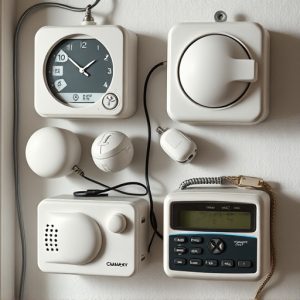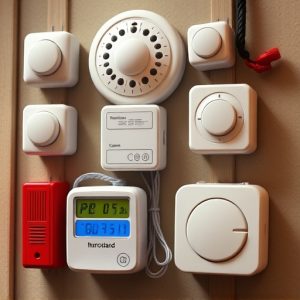Personal Safety Devices for College Students: Protecting Lone Workers
Working alone in educational settings like colleges poses unique personal safety challenges, exacerb…….
Working alone in educational settings like colleges poses unique personal safety challenges, exacerbated by lack of immediate support from colleagues. To mitigate these dangers, implementing Personal Safety Devices (PSDs) such as emergency buttons, GPS trackers, and distress alert apps is a proactive approach that empowers students and staff to take control of their safety, enabling swift response times during emergencies. Integrating tailored PSDs requires stakeholder consultation, risk assessment, regular training, active student participation, clear protocols, and continuous evaluation for optimal effectiveness in addressing evolving risks, particularly for lone workers.
Lone work, while often necessary, comes with unique risks. College students engaging in remote or unsupervised tasks face potential dangers that require proactive safety measures. This article explores these challenges, delving into various personal safety devices designed to protect lone workers on campus. From GPS trackers to emergency communication apps, we examine the types of technology available and provide insights on implementation for effective, life-saving alert systems tailored to college students’ specific needs.
- Understanding the Risks of Lone Work
- Types of Personal Safety Devices for College Students
- Implementing and Ensuring Effectiveness of Safety Alert Systems
Understanding the Risks of Lone Work
Lone work, particularly in educational settings like colleges, presents unique challenges and risks to personal safety. Students or staff working alone often lack immediate support, which can amplify potential dangers. These risks may include unanticipated accidents, medical emergencies, or even dangerous encounters. Without colleagues nearby to provide assistance or raise alarms, the onus of ensuring safety falls heavily on the individual.
Implementing Personal Safety Devices (PSDs) for college students and staff working alone is a proactive step towards mitigating these risks. PSDs can include emergency buttons, GPS trackers, or apps that enable workers to quickly alert authorities or colleagues in case of distress. These devices empower individuals to take control of their safety, ensuring swift response times during emergencies.
Types of Personal Safety Devices for College Students
College students, especially those who work alone or live in isolated areas, can benefit from various personal safety devices designed to enhance their well-being and provide peace of mind. These tools are crucial for ensuring that help is readily available in case of emergencies. One popular option is the Personal Alert Safety Device (PASD), which allows users to send out distress signals through satellite or cellular networks. These devices are compact, easy to carry, and can be worn as a pendant or incorporated into mobile phones.
Another innovative solution is the Global Positioning System (GPS) tracker, enabling students to share their locations with trusted contacts in real time. This feature is particularly useful for those who frequently walk alone at night or engage in outdoor activities. Additionally, smart watches equipped with fall detection sensors and automatic emergency alerts can be life-saving. These devices not only track physical activity but also offer an extra layer of security by automatically notifying emergency services if a user experiences a sudden fall or stops moving unexpectedly.
Implementing and Ensuring Effectiveness of Safety Alert Systems
Implementing and ensuring the effectiveness of safety alert systems is paramount, especially for lone workers in educational institutions like colleges. The integration of Personal Safety Devices (PSDs) should be a strategic process that involves consultation with relevant stakeholders, including students, faculty, and campus security personnel. Each college’s unique environment necessitates tailored solutions; thus, assessing specific risks and potential scenarios is crucial. This proactive approach enables the selection of PSDs that align with the institution’s needs, whether it’s emergency buttons, GPS tracking devices, or automatic alert apps.
Regular training sessions are essential to familiarize users with the proper utilization of these systems. Encouraging active participation from students can foster a culture of safety awareness. Additionally, establishing clear protocols for responding to alerts is vital. Continuous evaluation and feedback mechanisms should be in place to identify any gaps or areas for improvement, ensuring that the safety alert systems remain effective and up-to-date with evolving risks.
Lone work can present unique challenges, but with the right safety alert systems, college students can enhance their personal safety. By understanding the risks and implementing effective strategies, such as leveraging technology through personal safety devices, institutions can ensure a safer environment for all lone workers. Regular training and clear communication are vital to making these systems successful, ultimately fostering a more secure and supportive campus community.


